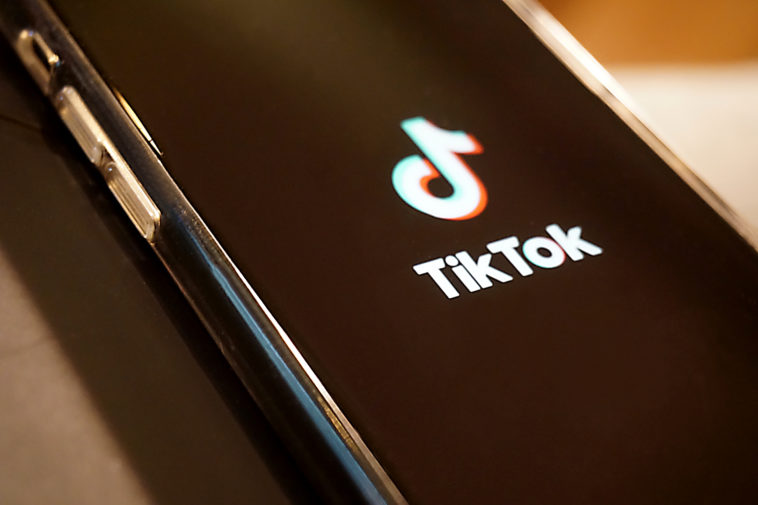TikTok Dives Deeper Into Shopping – WWD – WWD

If ever there was a moment of truth for the viability of social commerce, it would be during the coronavirus pandemic, an era that’s shuttered brick-and-mortar businesses and kept consumers attached to their homes and their devices.
Little wonder then that social media companies like Facebook, Instagram, Snapchat and Pinterest have been building new commerce features into their platforms. Now TikTok is pushing forward on plans to drive shopping further across its network.
The social video platform has a slew of changes in the works — including the ability for influencers to share product links and earn commissions off of them, and new abilities for brands to include and feature product catalogues. Livestream shopping via mobile video is also reportedly being planned.
The company previewed new features as examples of advertising products that it will be focusing more on this year, TikTok told WWD. It also confirmed that it is exploring affiliate product linking for users and new ways to boost discovery among broader audiences, such as product catalogues, with such changes still in testing mode.
TikTok’s interest in shopping is not new, but rather, the looming changes build on the foundational e-commerce efforts it established in 2020.
After the social media company launched its TikTok for Business last June, it joined forces with Canadian commerce platform Shopify in a global partnership unveiled in October. The deal immediately allowed more than one million merchants to create and run TikTok video campaigns directly inside their Shopify dashboards.
TikTok followed up by striking an agreement with Walmart in December on shoppable livestreams. Walmart was named as one of the proposed acquisition partners alongside Oracle, which teamed on a bid to acquire the business from Beijing-based owner ByteDance after the Trump administration threatened to permanently ban it unless ByteDance sold it. Things have been quiet on this front for months, and the fate of the acquisition — along with that of TikTok itself — remains unclear, now that the Biden administration has entered the White House.
But apparently the uncertainty hasn’t quelled the company’s commerce and advertising ambitions.
TikTok’s updates look like forward momentum on shopping and a rather definitive set of goalposts this year. For TikTok, supporting its e-commerce ecosystem with more advertising solutions is a priority, according to the company.
There’s plenty of reason for the push. According to research from social commerce analysis and digital marketing firm Bazaarvoice, 42 percent of shoppers made a purchase on social media over the past year. A November report from the Interactive Advertising Bureau found that marketers leaning into shoppable video ads are estimated to jump to 40 percent, up from 33 percent last year.
TikTok making shopping as accessible as possible is “a natural next step” for the platform, Lucas Tieleman, Bazaarvoice’s executive vice president of product, told WWD.
“By incentivizing influential users to add shoppable tags to their posts, it will make shoppability much more commonplace on the app, and undoubtedly increase the amount of transactions that occur there. It will also likely encourage popular users to post more than they already do, a win-win situation for TikTok,” he added.
As for livestream shopping, Tieleman noted that the shopping modality is wildly popular in Asia, which likely inspired the Western world’s fascination with it. “If done correctly, I have no doubt this move will be very successful for TikTok,” he said, “perhaps even making it the leader in social commerce if it is able to popularize and normalize livestream shopping in the U.S.”
That’s a big “if,” considering Instagram and Snapchat both have TikTok-like short video apps or features now, and Instagram, Facebook and Amazon — not to mention media companies like NBC Universal — all offer various forms of livestream shopping.
But the trend is still in its nascent stages, giving TikTok a potential leg up if it acts fast and gains traction.
In general, siphoning business away from fellow social media giants won’t be easy, though. The competition is fierce, and their massive coffers are overflowing.
Pinterest’s U.S. revenue soared 67 percent in the fourth quarter, generating $582 million for the visual discovery platform. Snapchat nabbed $911.3 million in revenue, representing 62 percent growth. Facebook — which includes Instagram and WhatsApp results — pulled in $28.07 billion in revenue over the holiday quarter.
Facebook’s chief financial officer David Wehner credited two economic trends for the strong results: “Ongoing shifts toward online commerce,” he said, and consumers shifting their demand from services to products.
The other major point in the social giant’s announcement, however, is the looming concern over Apple’s planned App Tracking Transparency feature for its iPhone. The update will require developers to get permission before they can track users for purposes like ad targeting.
Facebook has been hyperventilating over the issue for weeks. But the change will affect other platforms, including TikTok. And so, even with more commerce features on the way, it seems that the clock is ticking.
Published at Mon, 08 Feb 2021 23:15:55 +0000




Comments
Loading…